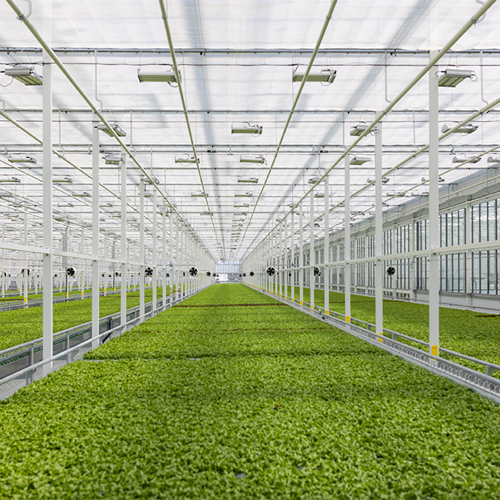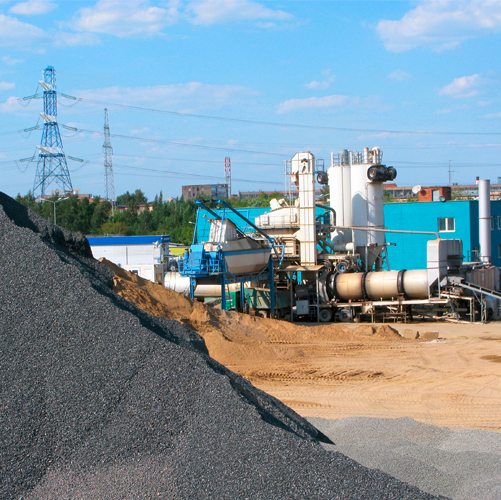Rotary kilns are sizeable pieces of equipment used in several industries for high-temperature heat treatments such as drying, gasification, heating, pyrolysis and calcination of granular materials. Rotary kilns use plenty of energy so they are particularly well suited to energy efficiency projects. In this article, we’ll explore different ways to both reduce their energy consumption and CO2 emissions and use the heat they generate.
The origins of the rotary kilnThe Leblanc process, which was used to make sodium carbonate in the late 18th century, is considered the very first use of the rotary kiln. Once the reactor proved useful in this fledgling industry, it was soon used to produce lime from limestone, and then to make cement. The metallurgical industry also made use of this invention. Today, this technology is indispensable in the production of a wide range of industrial products.
|
What is a rotary kiln?
A rotary kiln is a tilted, continuously rotating cylindrical reactor through which a load (sand, ilmenite, minerals or cement) moves slowly towards a flame. The kiln rotates to lift and shift the load until it is discharged and cooled. This type of kiln is used when a high intensity heat treatment (up to 2000°C) is required to obtain the physical properties required for a process downstream of the kiln (see Figure 1a and 1b). In cement production, for example, limestone is decomposed into calcium oxide at high temperatures to form the basis of cement clinker particles. Rotary kilns vary greatly in size, but some can measure up to 230 m in length and up to seven metres in interior diameter.
Figure 1a: The main components of a rotary kiln are: (a) riding ring (b) shell (c) refractory lining (d) roller (e) wheel bearing (h) base plate (g) hydraulic system (j) load.


Figure 1b: The main components of a rotary kiln are: (a) inlet head (c) rotary kiln (d) riding ring (m) gearbox (n) motor drive (e) roller (r) rotary kiln discharge end (p) central burner.
This equipment has a high carbon footprint. An energy efficiency project that is based on a good understanding of how it works can significantly reduce fuel consumption and even increase productivity. Waste heat from these kilns can also be captured by an energy loop and fed into other factories or a community. Finally, the large amount of heat these kilns produce can be used to generate electricity.
Moisture in the load
The most cost-effective energy-saving measure for a rotary kiln is, of course, to reduce fuel consumption at the source. A plant that uses a rotary kiln can save up to 50% on energy by simply keeping moisture and water out of the load before it goes into the kiln—and this calls for almost no changes to kiln equipment or operation.
Water has a high specific heat capacity, so its evaporation demands a substantial amount of energy, and that increases both fuel costs and greenhouse gases. To prevent this problem, set up either an outdoor shelter where you can store the load (see figure 2 opposite) or measuring hoppers for the input product. You can also develop an efficient drying strategy using the kiln’s residual heat to remove moisture from the load before putting it in the kiln.

Figure 2: Mines, cement factories, ports and many other industries must store large quantities of dry bulk materials. Storage facilities are often left exposed to the elements. Precipitation that gets into materials can affect energy consumption later in the process, in rotary kilns (Geometrica domes).
Reduced heat loss
Large amounts of heat are usually lost through the shell of a rotary kiln, especially in the combustion zone where the flame is located. High-performance insulating refractories (for example, a LyTherm ceramic layer) can reduce these losses and therefore transfer a greater proportion of the flame’s energy directly to the kiln load. Estimates suggest that installing high-efficiency insulating coating for kiln refractories can reduce fuel consumption by 0.1 to 0.34 MBtu/tonne. These figures apply to the cement industry, but other industries and applications can also achieve significant efficiency gains.
Figure 3: cross-section of a rotary kiln that shows the various types of refractories required for proper operation and increased energy efficiency. Insulating refractory can greatly reduce a kiln’s energy consumption.

Improving the combustion system
Rotary kiln combustion systems consume a great deal of energy (up to 200 MW of power) and can be highly inefficient. This inefficiency can be attributed to poor management and operation of the combustion burner, fuel and products. Inefficiency can be traced to factors such as a poorly tuned ignition system, incomplete combustion with significant CO formation, or combustion with excess air, which reduces the amount of energy transferred to the load.
Also, dual- and even triple-energy kilns, which frequently switch between burning natural gas, coal and other raw materials, must control combustion as well as management of different fuels, primary and secondary air, and transitions between different energy sources, to maintain a flame temperature and length that will not affect product quality (bearing in mind that each fuel has different flame properties). In addition, the combustion control system must coordinate flame operation and temperature with load temperature throughout the heating process. The product’s maximum temperature is the main control parameter for the rotary kiln process. Inaccurate or highly variable peak temperatures at the product discharge point can result in production inefficiencies and diminished product quality or yield, as well as wasted fuel and damaged equipment.
These challenges, combined with severe operating conditions, demand the use of specialized high-performance pyrometers (short-wave) that can be plugged directly into the programmable logic controller (PLC) to maximize kiln efficiency. The diagram below (Figure 4a) shows a dual-energy combustion system that can be deployed with an advanced air-fuel mixture control system.

Figure 4a: Automated combustion system with enhanced air/fuel mixture modulation.
Combined heat and power
Combined heat and power (CHP) also has tremendous potential for harnessing thermal energy from rotary kiln chimneys. In the cement industry, for example, approximately 35% of energy used is estimated to be lost in residual process streams. A combined heat and power system can produce steam to power turbines by recovering this “lost” energy. The turbines then transfer mechanical energy to generators, which in turn generate electricity. The main technical advantage of CHP systems is their ability to improve fuel efficiency for power generation and bolster the power system.
In technical terms, a CHP plant can make use of the Organic Rankine Cycle (ORC). This cycle is based on a turbine generator that operates as a conventional steam turbine to transform thermal energy into mechanical energy and then into electrical energy via an electrical generator. Instead of producing steam from water, the ORC system vaporizes an organic working fluid, which results in slower turbine rotation, lower pressures, and no erosion of metal parts or blades. In addition, ORC systems can be used at different source temperatures (even below 100°C by selecting a suitable operating fluid). They are also available in a wide range of sizes (up to 20 MW per shaft). Finally, they are very easy to integrate into existing systems (for example, to recover waste heat in industrial processes), which benefits factories that focus mainly on their production activities.
Rotary kilns are therefore important sources of energy that can not only sustain a factory’s operations and lower energy costs, but also shore up power systems in a world where electrification is increasingly being used for decarbonization.

Figure 4b: Williamson two-colour short-wavelength pyrometers use narrowband wavelengths to see through severe optical obstructions while the protective cooling jacket prevents damage to the pyrometer.

Figure 5: Organic Rankine Cycle Process (ORC)
Conclusion
As energy prices climb and factories become increasingly energy intensive, we must focus on solutions that optimize the energy efficiency of equipment to not only make factories more efficient but also generate electricity in order to make the grid more reliable and make more power available. Énergir provides leading-edge expertise, advice and technical support, plus substantial grants through its energy efficiency program, to customers who want to move a step closer to decarbonization.
Omar El-Rouby.
Senior advisor, Energy expertise
Continue reading







